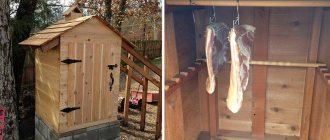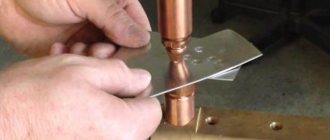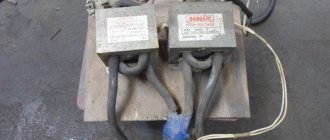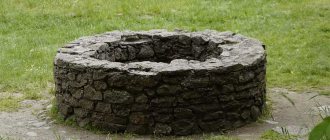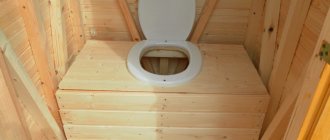Preparatory stage
Before you begin assembling the auger structure, you need to prepare a working tool . This list includes:
- sheet steel;
- car springs;
- file;
- special vice for fixing workpieces;
- hammer;
- cardboard and marker;
- grinder and wheels for it;
- fasteners; roulette;
- pipes of different lengths.
In addition, you will need a welding machine and safety glasses to reduce the risk of sparks getting into your eyes while working.
As for the pipe material, it is better to select steel elements that have increased corrosion resistance. If you take a cheap option, then after some time rust will appear on the surface.
If everything is prepared, then you can start working. To make a screw with your own hands, you must perform the following steps:
- first make a project, and then a template on thick cardboard;
- take a hollow steel pipe, this material must withstand severe mechanical stress;
- make coils from a flexible steel sheet and use a welding machine to weld the feathers to the pipe - you get a kind of spring.
If a screw is required to work with bulk material, then the turns must be arranged continuously. Otherwise, the desired effect will not be achieved. If everything is done correctly, you will get an effective tool that will have the following positive qualities:
- compact size;
- high performance;
- long service life;
- easy to use;
- rapid deepening and raising of the earth.
But all these characteristics can be obtained only if you strictly follow the installation instructions. Even a beginner can install some homemade devices.
Comments (1)
Wonderful site! I was attracted by the detailed, expertly described making of homemade devices. I myself make various devices and devices and I understand that giving such a detailed description and illustrating it well is a lot of work. Do you have any ideas for making a homemade waterjet cutting machine? This topic has been bothering me for a long time. At one time I worked on such a machine and since then I have the most enthusiastic memories of it. It is very expensive to buy, but on the other hand, the principle of its design is quite simple. We have plenty of homemade CNC machines, but I haven’t heard about a machine made by ourselves. The main problem, as I understand it, is the manufacture of an ultra-high pressure pump (4000 atm). If you're interested, we can think about it together.
Easy way
There is a very simple way to quickly assemble a homemade auger with two blades. These elements will fit perfectly into the ground. The only negative is that it can only be used at shallow depths, no more than 10 m.
The screw is manufactured using the following technology:
- We take a pipe with a length of 100 to 140 cm, it all depends on the height of the worker. In its upper part we weld an oblong nut that will correspond to the bolt. Can be replaced with two standard ones. If you take less, the structure will not hold securely.
- We weld a metal sleeve or thick reinforcement in the lower part - this element will act as an adapter to the drill. We buy a ready-made chisel or make it ourselves from a steel strip 30 cm long and 3 mm thick. First, we thoroughly calcinate it and then cool it in boiling lead or oil. We fix this spiral in the sleeve, and then carefully sharpen it.
- We take two discs from an angle grinder: one with a smooth edge of 150 mm, the other toothed - 180 mm. We saw these disks in half, in which case the central part expands and coincides with the main pipe. We install them one by one: first the smaller one, and 10 cm higher - the larger one. We place the parts strictly at an angle of 35 degrees to the ground. In this case, the efficiency increases with minimal effort.
- Next, we make tubular elements for extension. To do this, take a pipe with a similar diameter and length of 100-140 cm. Then insert a bolt from below and weld it. In the upper part we install and weld an oblong nut.
In this case, the drilling structure will make longer strokes, which means that working with the tool will be easier and faster. At this point the auger is ready.
Complex option
This method of manufacturing a screw will allow you to assemble a high-quality and accurate device that will serve for a long time. First, calculations and drawings are made, then measurements are made. It is also worth preparing tools and suitable material in advance, and only then start assembling a homemade drill.
Step-by-step instructions for installing a screw mixer are as follows:
- Take the prepared pipe, and it should be smooth, without any bends or deformations. Drill a perpendicular hole with a diameter of 8 mm at one end. This is where the top part will connect to the handle.
- Install the tip from below - this part will set the direction of movement of the earth. You can make it from an old car spring. You can cut the required square using a grinder.
- Make a longitudinal cut in the pipe, which should have a thickness equal to the tip. Next you should insert it with its sharp tip inside the pipe. The result should be a device that resembles a spear.
- Connect the parts using a welding machine, not forgetting about safety measures.
- Cut a cutter from the spring equal to ½ the diameter of the drill being made, and cut the teeth on it. It is these elements that will bite into the soil, loosen it, and only after that the soil will fall onto the spiral of a homemade auger.
- Position the cutters so that they are at an acute angle to the main surface. After this, the parts should be welded to the steel pipe.
- Cut a circle from a metal sheet, the same in diameter as the auger spiral. Make a hole in its center into which the pipe will be inserted. Attach the manufactured disk to the cutter welded to the tube. Mark their contact using a pencil or a special marker.
- Using the marks obtained, cut the circle from the edge to the center; it is best to do this with a grinder. Place the cut disk in a vice and twist the elements into a spiral with a hammer. Place the self-made auger onto the pipe and weld it. Finally, brush the surface with a wire brush and paint.
Actually, this is where the work is finished. All that remains is to make a handle and an extension cord. The first one can be made of plastic, it will be more convenient, but the last part can be made from any suitable pipe.
How to correctly calculate and manufacture an auger in a workshop?
You can make a homemade auger only after carrying out the appropriate calculations. The main parameters are the following:
- The diameter of the pipe that acts as the base. Attention is also paid to length.
- The dimensions of the turns and their pitch.
- The most suitable type of material used to manufacture the part.
When making a screw yourself in a home workshop, you have to carry out metal cutting and welding. That is why you will need a welding machine, as well as a grinder.
In the technical documentation you can find all the required information to carry out the relevant calculations.
Read also: Makita sander pad
Some tips
Some recommendations will help you make a high-quality drilling device. When working, you should consider the following:
- It is necessary to correctly calculate the diameter of the screw. The fact is that during operation the hole will differ slightly from the size of the cutting part. For example, a 200 ml element will provide a well of 240-250 ml.
- You can replace the grinder discs with regular sheet steel, the thickness of which will be about 2 mm. But it will have to be further bent and sharpened to give it the ideal shape.
- When working with the disk, you must follow safety precautions. It should be carefully and securely secured in a special vice, and cut only with safety glasses.
- To calculate the auger feather, you can use the special program “Compass-3 D”. She will do everything necessary, just enter the initial data and wait for the finished drawing. All this will significantly save time.
To extend the service life of a homemade auger, you need to clean it after each job. Remove soil from metal parts, adjust blades and sharpen them if necessary. In addition, for storage, choose rooms with low humidity.
How to make a screw with your own hands - make a flexible one
About two and a half thousand years ago, the ancient Greek mathematician, physicist and engineer Archimedes invented a water-lifting machine, which later became known as the Archimedes screw. It was this invention that served as the prototype of modern screw conveyors.
Augers, as they are otherwise called, have extensive applications in industry and beyond. Meat grinders, drills, drilling tools, all of this works with the help of augers.
Well, today we will talk in detail about the use of screw conveyors in snow blowers, consider the causes of malfunctions of its belts (read about them here), and learn how to replace worn-out machine elements with your own hands. Read more about DIY repairs here.
Belt application device
There are two types of belts used in snow removal equipment; they do different jobs, but the principles are the same. In both cases, their task is to transmit torque from the drive shaft to the driven shaft. The first belt transmits the moment of force to the auger, and the second distributes it to the wheels.
Due to their strength and similarity to the structure of chains, timing belts are used on snow blowers. They are more convenient and lighter than regular ones, transmit torque well, and are easier to secure in hard-to-reach places. Among other things, belts are divided into two types:
The first type is more likely to be found on the auger; it is more elastic and durable, and is more difficult to deform. The second type is suitable for transmitting high torques in both directions; it is more often used for wheels.
Now it is clear that belts are integral structural elements, without which work is not possible. It is for this reason that it is important that they remain intact during operation, because they are one of the most frequently broken parts in a snow blower and wear out very quickly at the most inopportune moment.
If, while clearing snow, you suddenly notice that the wheels or augers are not responding when you try to operate them, you can be sure that you will have to replace one or both belts.
You can carry out the replacement work yourself, this will save you some money, but first you need to understand what exactly caused the belt to fail.
Scope of application of the device
Augers are used for drilling wells and provide rapid soil excavation. They are used when performing the following work:
- drilling water wells;
- drilling holes for pile foundations, electrical or fence posts;
- making holes for planting seedlings;
- ice fishing;
- construction of ice holes (for fishing, swimming, ice diving).
Types of drills:
- The simplest drill is an auger with a handle. It is powered by human muscular power. Suitable for winter holidays and small amounts of construction work.
- A motorcycle or gas drill is equipped with a gasoline engine and a reduction gearbox. The engine power and auger for the motor drill are selected based on the tasks assigned. For example, for work on a summer cottage, a power of up to 3.5 liters is enough. s., and for professional use in the gardening and construction industry, it makes sense to take a closer look at models with a capacity of 5–6 liters. With.
- Electric drills are almost impossible to find on sale, but you can easily make them yourself if you have a powerful electric drill or a small electric motor and a worm gear, which can be removed from old and faulty equipment. The main problem with electric drills is low power and susceptibility to overheating. However, for infrequent use and drilling small-diameter holes, they are quite suitable.
Causes of malfunctions and repairs
There is no way to protect the belt from wearing out; at some point it will still have to be replaced, but there are some operating tips that will help the belts “live” longer:
- Take breaks from work; long-term non-stop operation of equipment leads to the fact that all structural elements become very hot. Such conditions will very quickly destroy the belt, and will not have the best effect on the car as a whole.
- At the same time, you should not turn the snow blower on and off too often. This also has a detrimental effect on the operation of all parts.
- You should never forget that any technique loves caress and lubrication. Regularly lubricate all parts, this will significantly increase their life.
These tips will help you delay the death of your belts, and your car will certainly thank you for it.
With the help of minitrator you can remove snow in your garden or in the city.
About
Review of snow blower designs, making a do-it-yourself auger snow blower
Small-scale mechanization in the private sector today brings great benefits. Therefore, a homemade snow blower will help you remove snow in your yard quickly and with little effort.
If you choose a successful design and are able to skillfully implement it, then even the weaker members of your family will be able to clear snow.
Instructions for replacing belts
When a belt fails, you should use these instructions for replacing it:
- First, decide which belt you are going to replace.
- Remove the cover covering the belts. It is located in front of the engine, under it you will find nuts. Usually there are six such nuts.
- Unscrew the nuts. If the drive cable prevents you from doing this, loosen it
- So, you got to the belts, remove the damaged parts.
- After installing new belts, you need to spend some time tensioning them. Find the optimal distance at which they will be well tensioned.
- Screw the nuts back and return the cover to its original position.
- The auger gears are available in 20- and 24-tooth types.
For more information about replacing belts on a snow blower, watch the video:
How to make a screw with your own hands
The manufacture of the screw is carried out in several successive stages:
- We make a frame from pipes. Typically, the drawings give dimensions of 50 x 70 cm. Based on the size of your motor and the size of the bucket 50 x 30 cm, you can choose the most suitable frame size yourself.
- The auger itself is made of a pipe; a 270 x 120 mm blade made of two or three mm steel is installed in its center. The screws can be made from conveyor belt, but it is preferable to use steel.
- Balance the screw by removing excess metal with a grinder. To do this, install the screw in the finished seat and turn it by hand, so you can find out where the metal needs to be removed.
- If you decide to use a conveyor belt, you will need about 1.5 meters one centimeter thick. Four rings with a diameter of 28 cm are cut from the tape.
- Use a rubber plug to cover the bearings in which the shaft will rotate. Otherwise, they will immediately jam.
- The bucket can be made from ten-millimeter plywood. For rigidity, the walls of the bucket should be attached to the frame.
- When making such structures, it should be remembered that if an electric motor is used (for electric snow blowers), it must be protected from snow. If you choose a walk-behind tractor, decide in advance on the adapters to connect it. Read the article about how to make a snow blower for a walk-behind tractor with your own hands.
Choosing a snow blower design
1.Screw-rotor type.
Most small snow blowers have an auger-rotor arrangement, in which a rotating auger feeds snow to a rotor with blades (impeller), which throws it away from the cleaning site.
According to this scheme, both independent machines with gasoline engines and electric motors, as well as attachments for many walk-behind tractors and mini tractors, have been created. It has shown its efficiency and fairly high productivity, but its greatest drawback, in our opinion, is not so much the abundance of parts as the need to ensure rotational motion on two mutually perpendicular shafts, and even with different but consistent frequencies of their rotation. This is precisely what determines the rarity of implementing such a scheme with your own hands: the selection of two gearboxes, one of which must transmit rotation at an angle of 90°.
The auger speed should be in the range of 500 – 800 rpm, and the impeller speed should be 1000 – 1500 rpm, so that it has time to throw out the snow fed by the auger. And the diameter and dimensions of its blades must be consistent with the diameter and width of the auger. This calculation is quite complicated, therefore, if you decide to use just such a scheme for your snow blower, then it is better to take as a basis the parameters of one of the industrially produced devices, where everything has already been calculated and copy it.
Making a screw with your own hands
In a country house, in the absence of a centralized water supply, they equip an autonomous one - a well or a well, and to drill a well, in order to save the budget, they do not rent a drilling rig, but drill with a homemade auger, which makes the process cheaper, although it makes it a little more time-consuming. You can make an auger with your own hands in one day: it is enough to have some tools and materials for this, which will be discussed, as well as the manufacture of an auger with your own hands is described in detail.
Drawing for making a screw spiral
Why is an earth drill necessary ↑
A drill is used instead of a shovel when it is necessary to dig a round hole of precise diameter. In a country house, an automatic or manual drill for excavation work will be useful if you plan to:
- Install a columnar foundation for a house.
- Dig holes for planting trees and bushes.
- Loosen the soil around already growing plants.
- Drilling the ground to install a fence.
- Dig a compost pit or well, a straight or inclined tunnel.
The design of a garden auger differs from industrial tools and depends on the purpose. Key parameters: number and diameter of blades, as well as rod length. The advantages of the garden version over the industrial one are lightness, ease of use, and the ability to make it yourself.
Screw manufacturing procedure
Materials and tools you will need:
- Thick-walled iron pipe Ø 40 mm and profile pipe;
- Grinder with metal disc, electric drill and welding;
- Steel sheet ≈ 2 mm thick;
- Tape measure, pencil, cardboard for making a template, paint;
- Chisel, rasp, sharpener and hardware (bolts with nuts);
Construction of a screw conveyor
First, you need to make the actual belt conveyor, which is offered in two versions:
- For self-production, a screw loader with dry soil unloading is more suitable, that is, the soil is not wetted with water, but is taken to the surface in the same condition as it was at depth. This method involves rapid wear of parts and is designed for drilling shallow wells, or preparing several augers for replacement during the drilling process;
- Excavation with water flushing is much faster, but the mechanism requires improvement in the bit area. Part wear is reduced by reducing friction and water cooling of the mechanism. Below we will consider just such an option, which can be used without water not only as a drilling tool, but also, for example, as a grain loader.
Hand drill with flushing the auger
Before making an auger with your own hands, prepare the material. A 120-centimeter piece of pipe is taken as the body, the ends of which are cut evenly with a grinder. Next, you need to cut a square with sides 200 x 200 mm from sheet steel, drill Ø 40 mm in the center of the square and make a slot with a grinder from the center in any direction to the edge. This will be one turn of the conveyor spiral, of which several will need to be made. To make it round, the square is cut by welding or a grinder to the shape of a circle with Ø180 mm, the spiral is bent so that the pitch between the turns of the spiral is within 80-100 mm.
Schematic diagram of the auger interturn feather
You should end up with a circle, the beginning and end of which do not coincide in the plane. This part will serve as a template: you will need to attach it to a sheet of steel, outline the outline with a pencil and cut out the next circle. It is better to paint these blanks immediately to protect them from corrosion, and after assembling the structure, paint them again.
With a pitch between spirals of 100 mm, 12 spirals (feathers) must be cut for each auger segment. The rings are secured to the auger axis by welding, and to each other too. After welding, the seams are hammered and cleaned of scale with a rasp.
A profile pipe is needed to make the auger mounting system. The pipe is left open at the top to allow water to flow into it. To produce an auger, water is simply not poured under the grain. The profile pipe is inserted 2/3 into the round one and welded, and the gaps between the pipes are closed with pieces of sheet steel. In a square pipe, step 2 cm away from the top and drill a through hole Ø 10 mm.
Auger drawing
The manufacture of the receiver, which is located on the back side of the auger, involves welding four steel sections that follow the contours of the profile pipe. Departing 2 cm from the lower end, a through hole Ø 10 mm is also drilled, through which the entire structure is fixed using a bolted connection. It is better not to use a threaded connection so that when the screw rotates in reverse, the structure does not become disconnected.
Next, a bit for the auger is made, which will be welded and placed in a separate lift. It is easier to purchase a ready-made chisel than to make it yourself, since it requires hard metal alloys, which are very difficult to process at home. In addition to carbide tips, you can use diamond ones. The chisel is a replaceable tool and is attached to the auger using a pin or a threaded connection. Most often, industrial bits are two- and three-bladed, reinforced with six- or octagonal cutters made of hard alloys. A homemade chisel is welded to the auger (see picture below):
Homemade and industrial chisel
At the end of the work, the auger blades are sharpened to make cutting the soil easier - this can be done on a grindstone or with a file. When using an auger for handling grain crops, sharpening is not required.
The finished auger is painted with anti-corrosion paint and the steel surfaces are pre-primed. During operation, most of the paint will be erased, but there is no need to restore it - it will be erased in those places that are constantly in contact with the ground, so rust will not appear there.
Practice has shown that making one auger will take no more than 5 hours if you do not have the skills to work with iron. But what is important here is quality, not speed of production, so it’s better not to rush.
How to care for drilling equipment ↑
Making a hand-held drilling device at home is not difficult, but it requires care to ensure it lasts for many years. Rules for keeping a drill on the farm:
- Immediately after purchase or manufacture, coat the blade and stem with an anti-corrosion compound to prevent rust from forming. The second option is to paint the product with metal paint.
- Before work, check the sharpness of the blade and, if necessary, sharpen it with a block or sandpaper.
- Before drilling, loosen the top layer of soil with a shovel.
- Having screwed the tool in until the last turn, carefully pull it out - do not allow the blades to bend due to an excess of earth.
- After work, clean the blades and stem from adhering soil.
- Repair any damage promptly.
Video: Tool for digging holes
When working with any type of drilling rig, make sure that the soil around the edges of the hole does not crumble. If necessary, pour water inside and continue the process. A correctly made drill in combination with proven application techniques is the key to success when developing a site.
Preparatory stage
Regardless of what kind of auger you have to make, the handle should be as comfortable and durable as possible, because it is she who will take on the load. It’s worth considering immediately 2 options for working for 1 and 2 people.
To begin with, pipe sections with a diameter of 40 mm and a wall thickness of 3.5-4 mm are prepared. The length depends on how much a person will work, and at the same time on the individual characteristics of body proportions, because for a person 2 m tall, longer blades can be used, and the work will proceed more quickly.
For the average person, a handle of 80-85 cm is used, while for working in pairs you can safely make blades of 100-130 cm in each direction (convenient when drilling to great depths). Another 1 cut is made, stable 40-50 cm, and this cut will be used as the main working trunk.
Figure 1. Schemes of roller bits.
To fix them together, a grinder makes an arc cut in the main trunk so that the pipe can be immersed into it at 13, after which it can be welded thoroughly. If you want to increase the strength characteristics, then you can insert a profile pipe inside the handles and weld it with sheet steel. This move will allow you to seriously increase the load without fear of damaging the tool.
The handles can be left in the form of a tube, but it is better to make rubberized linings on them, which will prevent your hands from slipping, and at the same time reduce the likelihood of calluses. There is no need to install any limiters, but using an angle grinder it is advisable to grind the ends of the pipe so as not to injure your hands while working.
At the end, a bolt is inserted into the pipe and welded tightly so that only the thread is lowered down. It is advisable to choose a bolt from the strongest grades of steel, so as not to have complications later.
Power units for homemade snow blowers
A power unit is needed for a snow blower that operates autonomously and is not an attachment to other equipment that already has its own engine. In this case, you only have to transmit torque to the device.
Naturally, we will not consider exotic options, but will talk about its two practical types:
- electrical;
- gasoline.
If the field of activity of your snow blower is limited by the size of the yard on the site, and it does not go beyond the standard cut when allocated in our country, then you may well consider an electric motor as a power plant.
Moreover, a rotary snow blower will be the more preferable option in this case.
On the forums of DIYers planning to build such equipment, there is a heated discussion of the electric propulsion unit, in which the main argument of its opponents is its price approaching (along with the wire required by the parameters) to the internal combustion engine. But this does not take into account the radically lower cost of electricity compared to gasoline and oil, the lack of maintenance and the durability of the electric motor.
For most home snow blowers, a single-phase motor with a power of 2 - 3 kW and a rotation speed of 1500 rpm is suitable, which is one of the most common parameters for this equipment. And in order not to carry a very long cable with you, you can equip several stationary connection points. They may also be useful for powering other electrical equipment, which is rapidly being replenished in the technopark of the Russian private sector.
If we talk about internal combustion engines, the most commonly used are power units with a capacity of 4 to 6 hp. For the largest snow blowers - up to 9 hp. As before, one of the most common options is to use chainsaws with the saw bars removed and the drive sprockets replaced.
But we will consider the specific use of internal combustion engines on one of the most successful, in our opinion, snow blowers in the next section.
Making a screw
A simple method will allow you to make an extremely simple system with 2 blades that cut perfectly into the ground, but they can only be used at shallow depths (up to 10 m), because Each time you will have to take out the working tool completely to extend it.
To begin with, select a pipe similar to that used above. The length of the pipe is 100-140 cm, depending on the height of the person who will be working. An elongated nut is welded into the upper part of the pipe, completely matching the bolt. If you can’t find an oblong one, then you can use 2 standard ones, but no less, so that the bolt holds securely.
Figure 2. Drawing of the auger ring.
A sleeve or thick reinforcing rod is welded into the lower part, which will serve as an adapter to the drill. The chisel itself can be purchased at a specialized store, but a primitive version can also be made. For a primitive version, it is enough to take a steel strip 3 mm thick and 30 cm long, twist it into a spiral into 3 turns, and then calcinate it (cooling in boiling oil or lead). Such a spiral is fixed in a sleeve, after which it is sharpened in the most careful way.
At this stage, you will need 2 grinder discs, the 1st 150 mm with a perfectly straight edge, and the 2nd 180 mm toothed (for wood). These 2 discs are sawed exactly in half and the central part is widened to match the work pipe. The disks will be positioned alternately on the working pipe, i.e. first 150 mm, and 10 cm higher than 180 mm. They are located at 35° to the ground to achieve maximum efficiency with minimal effort. When fixing, there is a possibility that you will have to adjust the central part with an angle grinder.
Tubular elements for extension are made quite simply:
- Take a pipe of the same diameter and length 100-140 cm.
- A bolt is inserted from below and welded, and an oblong nut is inserted from above and also welded tightly.
Thus, you can make very long strokes, but it is better to limit yourself to 10 nozzles, because It is difficult to remove them every time due to their high mass.
More complex option
Schemes of garden drills: a - drill, b - auger drill.
Here you will have to work much longer and harder for production, because... the screw conveyor will go from the bit to the very top.
The chisel can be used according to the technology described earlier, but it is better to purchase it in a store (Fig. 1). In any case, it will require regular care, and the difference depends solely on the skill of the worker, because... You can make it with your own hands as good as an analogue.
After the bit has been mounted on the working pipe, you need to begin forming a spiral (Fig. 2). The most convenient way to make it is to use the already familiar toothless discs under the grinder, but as a base one you will have to use a toothed one with a smaller diameter, which will immediately relegate the problem of the roots to the second plan.
Instead of grinder discs, you can take and bend 2 mm sheet steel, which will be much more economical, but more labor-intensive, because You still have to shape it into a perfect circle and sharpen it. In any case, the work ahead is astronomical, and this procedure is done for each subsequent auger.
Fastenings and working part
Now we need a mounting system. For its manufacture, a profile pipe is used, only in this case the pipe on top is not welded with anything, because liquid will circulate there.
Drilling auger drawing.
The pipe is immersed 2/3 into the round pipe, after which it is carefully welded, and for reliability you need to use pieces of sheet steel that will bridge the gaps between the profile and round pipes. Here the weld must be extremely reliable. A through hole must be made in the profile pipe at a distance of 2 cm from the top.
Now we need to work on the auger on the reverse side, where the receiver for the profile pipe is formed. Here you need to use 4 sheet steel plates, which will perfectly follow the outer contour of the square pipe. The seams are formed to the maximum available depth (usually 5 cm), and fixation is made from below, similar to that described above. At a distance of 2 cm from the bottom, a through hole is made through which fixation will be made.
The diameter of the hole is 10 mm; bolts and nuts with blades are selected for them, so that they can be removed quickly enough. Sometimes a threaded connection is found, but when rotating in the opposite direction there is a risk of the structure unscrewing, after which it may take half a working day to restore.
Now the auger only needs a chisel. A separate lift is allocated for it, and the bit itself is attached in the standard way described above. The only exception is the holes for supplying water and solution. They must necessarily have a diameter large enough to be able to work under pressure without problems. There is no need to make a chisel, because... here you need carbide metals or diamond tips, because other materials will not penetrate the rock.
Read also: Chainsaw parameters



